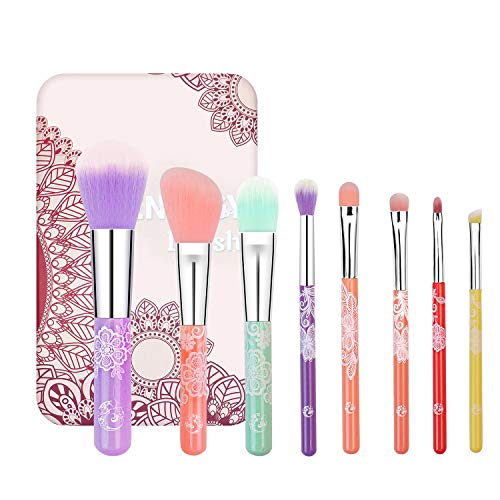Here more tips and home remedies from
Hairchick.com
INGROWN HAIR (AND WHAT TO DO ABOUT IT)
Waxing, shaving, sugaring, tweezing, epilators, and even hair removal creams or depilatories can cause ingrown hairs. If you've had this problem, you likely won't soon forget it. After getting rid of your unwanted hair, you find little red painful bumps over your skin. They look like a rash and hurt and itch.
What's the damage?
Ingrown hairs happen when a hair grows back the wrong way, causing pain. The danger with ingrown hairs in that they can become infected, especially if you keep shaving or using hair removal methods before your skin has had a chance to heal. The other problem with ingrown hairs is that they have the tendency to crop up in places where the skin is especially tender (the bikini line, thighs, and face) so that they become a huge annoyance.
Are there any prevention methods?
Yes. The best way to deal with ingrown hairs is to prevent them before they begin. You can do this by exfoliating before shaving and by exfoliating with a loofah or body scrub each time you shower. This seems to work by stimulating the skin and by keeping pores open. Some women find that consciously relaxing their muscles while hair is being removed helps to prevent ingrown hairs. After removing hair, you should avoid using heavy moisturizers or creams on your skin for a few hours. These can clog skin. You can use witch hazel, aftershave, toner, or even cold water after waxing, tweezing, sugaring or using an epilator. This tightens the pores and cleans the skin (NEVER use witch hazel, toner or aftershave on sensitive areas like the bikini line, and only use toner on your face). If you find that one part of your body is always affected by ingrown hairs, try using a different hair removal method on that part of the body.
Best way to treat ingrown hairs?
Even if you take every precaution, you may still get some ingrown hairs. The best way to treat them is to let them heal on their own. Keep the area clean and the situation should clear up on its own. If the ingrown hairs get worse or itch or hurt a lot, you may have an infection. Check with your doctor or dermatologist for help. If you have ingrown hairs on your legs or bikini line, try to wear loose-fitting clothing for a few days so that the friction from the fabric does not aggravate your skin even more. Only start shaving, waxing, or using your regular hair removal methods again once your ingrown hair has healed.
And here a few Home Remedies
Home remedy #1: Preventing ingrown hairs
You can prevent ingrown hairs in the first place by exfoliating your skin before shaving and every time you shower. You can use a loofah or sponge, but if you have delicate skin the abrasion can hurt your skin. Body scrubs are available at online stores, drug stores and department stores in every price range. The only problem is that the less expensive scrubs tend to use abrasive ingredients. Whipping up an all-natural and mild scrub is a home remedy to prevent ingrown hairs and it only takes only a few minutes. Hairchick's favourite recipe includes baking soda. Just mix a teaspoon of baking soda with a tablespoon of liquid soap. Use your hands to spread this mixture over your body and then rinse off. You can also make a body scrub by mixing sugar with equal parts liquid soap.
Home remedy #2: Preventing ingrown hairs after shaving
After shaving, try using witch hazel (available at any health food store and some drug stores for a few dollars) to the skin. Applying an antiseptic can also help offset ingrown hairs by cleaning the area. Hairchick has a friend who crushes two aspirin in water and applies to the skin just after shaving. She swears this helps prevent ingrown hairs for her.
Home remedy #3: Getting rid of itchiness caused by ingrown hairs
If it's too late and you already have ingrown hairs, you can reduce any itchiness you have by pureeing half a cucumber and adding 1/3 cup of milk. Mix the mixture and store (covered) in the fridge for a few minutes until cold. Soak gauze or a cloth in the mixture and apply for a few minutes to the irritated areas, then rinse off. This will not make the ingrown hairs go away, but it will take away the itchiness and irritation for a few minutes.
Home remedy #4: Facial ingrown hairs
If the ingrown hair is on your face, you can wait a day or two and then look at the hair in direct sunlight with the help of a magnifying mirror. If you notice a bit of hair sticking out, it is possible to remove the hair by plucking it out. You will need to clean the area scrupulously before and after tweezing. Tweezing will hurt far more than it usually does, so don't bother if you have more than one ingrown hair on your face. Don't even think of trying to yank ingrown hairs on other parts of your body - you'll have a very hard time trying to see the hair properly. Hairchick suggests that you leave the hair alone if at all possible, and only resort to pulling it in case of a dire emergency - like an important event. Pulling at an ingrown hair can cause an infection and may lead to scarring, so it is not a technique to be taken lightly.






































